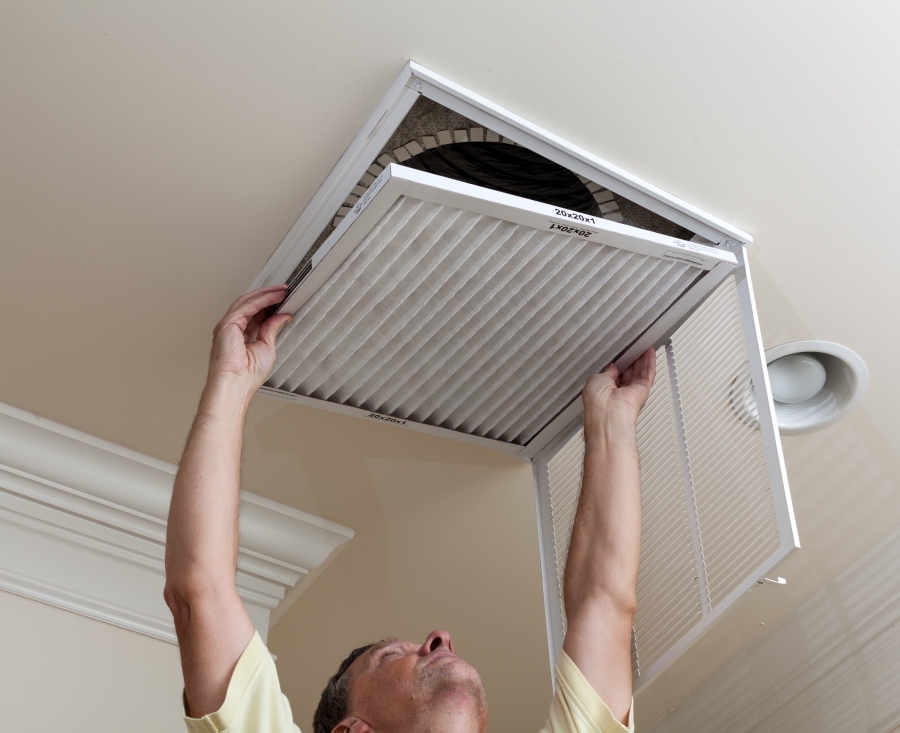Regular home maintenance is the key to keeping it a safe environment. When your house is in a good state, it’s less likely to develop issues that will turn it into an unhealthy and unsafe space. Some of the potential problems that might be present include poor air quality due to mold and allergens, entry of drafts, pests that carry diseases, and invasive insects.
If you want to ensure that your house is a safe environment, there are several maintenance tips that can help save the roof, foundations, and other essential parts of your home. These include:
1. General Inspection And Repairs Of The Roof
Spring is the suitable time of the year to inspect the roof since damage from the winter elements is likely to be present.
Inspect the attic or an interior ceiling for any stains or discoloration, which might indicate the seepage of water into your home. Check the roof for lifted, missing, or loose shingles, and the intact shingles for mold, moss, cracks, worn spots with missing granules, curling, and peeling. Additionally, check for any loose or missing flashing, roof bolts, and nails. Make sure to replace and fix shingles or flashing, and replace or secure roof hardware as needed.
In case there are peeling, curling, and partly raised shingles in several areas of the roof, they’re a sign that the roof is close to its end of usability. At this point, the best move is to hire a roofing professional for replacement. For major roofing repairs or replacements, working with reputable roofing companies is the best choice.
Some of these roofing companies utilize leads to find clients who need their services. If this process is something that you’re unfamiliar with, you could try here to learn how it works.
2. Maintain The Heating And Cooling Systems
The heating, air conditioning, and other forms of climate control systems function by circulating cold and hot air throughout your home. Due to this, it can become a potential conductor of pollution within your house.
Regular cleaning of the vents, along with the thorough washing or replacement of the filters, is an essential part of the maintenance routine. It’s important to note that routine care of the climate control systems is also necessary to prevent a drop in the performance level or even breakdowns in the long run.
3. Control The Moisture Level
When there’s an elevated moisture level in your home, it increases the likelihood of mold formation, which can trigger various health issues. The moisture can also attract insects and rodents.
You can minimize these risks by making the necessary repairs right away if you have leaking pipes or sinks. As for leaking roofs, they require an immediate repair job. Additionally, you might want to use exhaust fans in the bathroom or kitchen to lessen the humidity level while showering or cooking. If exhaust fans aren’t available, you can open the windows.
4. Regular Vacuuming Of The Floor
If you have carpeting at home, it requires a routine of vacuuming at least twice a week. Make sure that you’ll use one with a HEPA filter. Remember that vacuuming will not only get rid of dust buildup, but also remove fur, animal dander, dirt, and other contaminants that can trigger health issues.
While vacuuming, move and vacuum behind furniture and other objects. You can lessen the level of dirt, along with other detrimental substances in your home, by removing shoes before entering. Take note that shoes can bring anything you step on while outdoors inside your home.
5. Test The Sump Pump To Avoid Flooding
A sump pump is usually in basements and the last mode of protection against flooding, condensation buildup, and water from drains. The ideal way to avoid an inundated basement or damaged foundation is to check the pump every six months. You can do this with the following steps:
• Get rid of any debris buildup from the outside pipe.
• Restart the pump to test if it’s functioning.
• Add water into the sump crock and check if the pump starts working and pumps the water away
6. Check For Possible Mice Infestation Near Wiring
You don’t want to live in a home with mice around, regardless of where they are. Nevertheless, once they start to nest in certain areas in your house, such as the air conditioning units, near electrical wiring, or garden machinery, it can be a disastrous ordeal. You must check for mice in your house since they can put you at risk of fires and electrical faults.
7. Routinely Change The Batteries In Carbon Monoxide And Smoke Detectors
One way to keep your home safe is to change the batteries in smoke and carbon monoxide detectors a minimum of two times in a year. You can stay safe if you have at least one of each type of sensor on every level of your house. If you’re prone to overlooking this task, you should replace the batteries when you replace your clock for daylight savings.
Remember not to depend on the automatic beeping to inform you when to change the batteries. After replacement, make sure that you’ll press the test button down for 15-20 seconds. Do this after changing batteries so you can hear whether or not the battery is faulty or functioning normally.
Conclusion
For every homeowner, the priority is to ensure safety at all times. The best way to keep your home safe is to carefully follow a regular maintenance routine covering all the essential elements. With the help of these maintenance tips, you’re guaranteed to have a safe and healthy space for you and your family at all times.







